For ten years I’ve taught ten grade levels each week, with multiple sections of each. At first, tracking the progress and the related materials for each class seemed an insurmountable task. What I’ve found is that teaching multiple grade levels requires a superior organizational system. If you’re facing a similar challenge, I have a solution for you.
Introducing the 3B System: Boxes, Binders, and Bins
Read on to see how to use these three items to keep track of your lessons and all of the materials that go with them.
Boxes
Consider containing lesson materials for each grade level in a separate place. I’ve found Ikea file boxes work well.
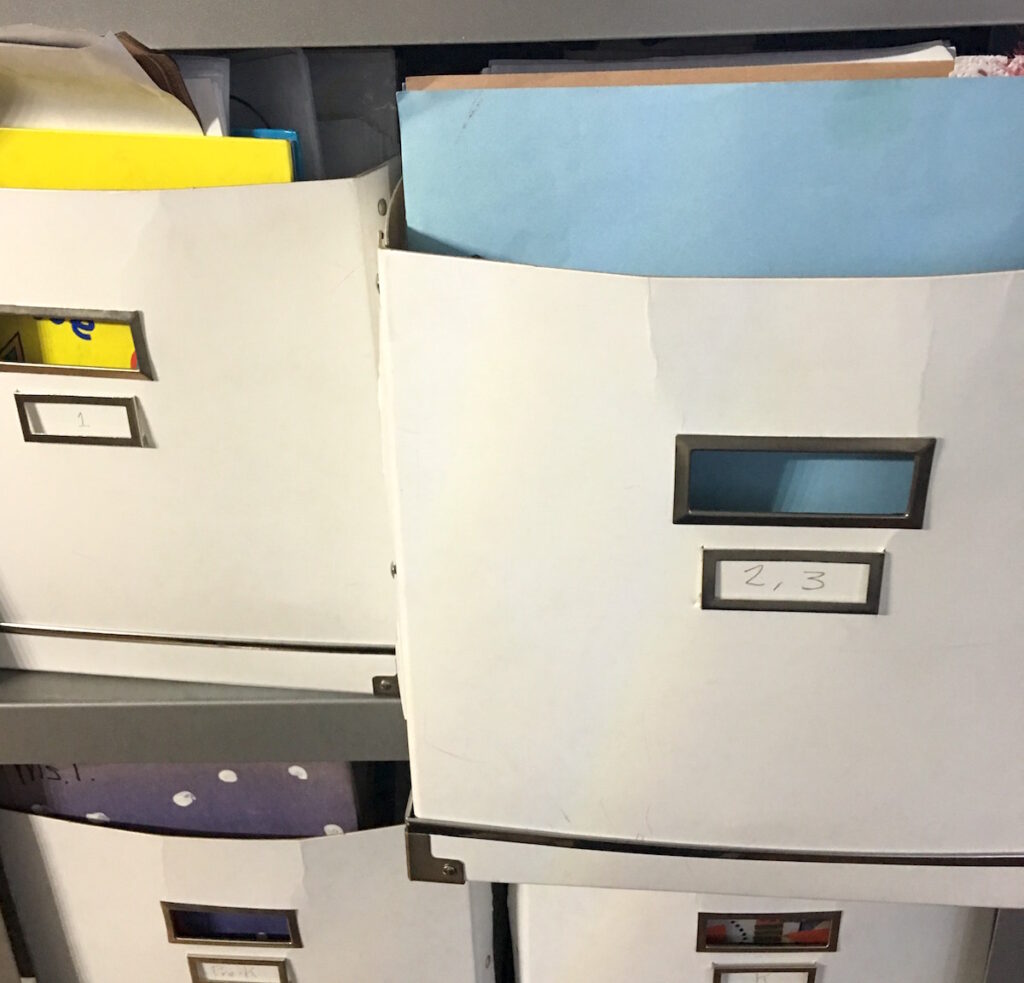
Inside each box, I have all of the lessons and lesson materials for a particular grade level. I keep my plans and any related paper materials (like student planning sheets, tracers, rubrics, and more) in plastic binder sheets and organize them chronologically.
Each Sunday, I pluck out the plans I need for the following week. Then I put them into my “Weekly Plans” binder described below and bring that with me on Monday morning.
Binders
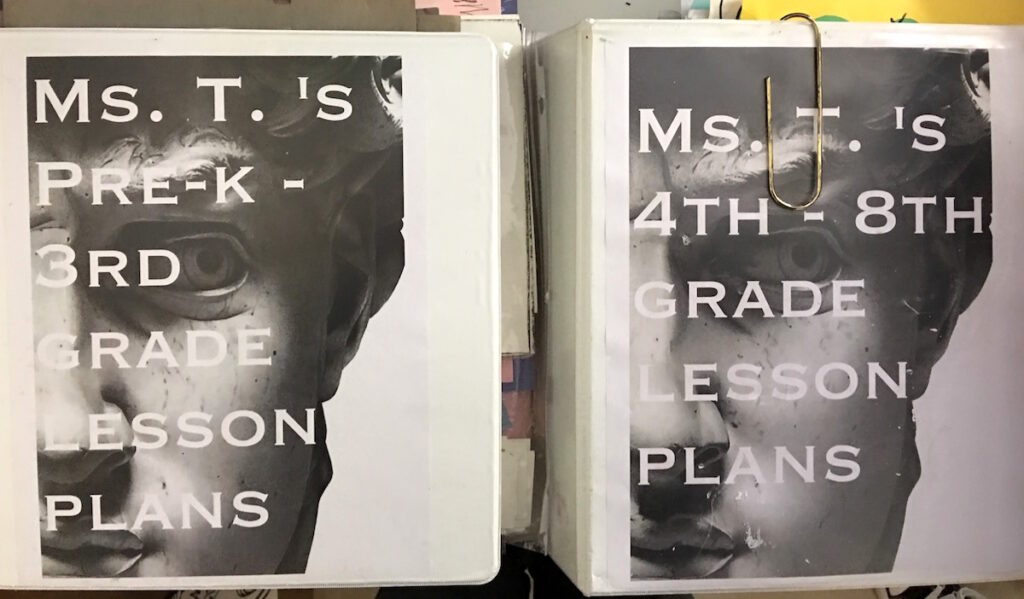
My “Weekly Plans” binder makes it easy to flip through the week’s plans and get a mind map of what I’m going to be doing with each grade level. It also keeps a mountain of papers like handouts, pre-cut paper, and reference materials organized at my fingertips.
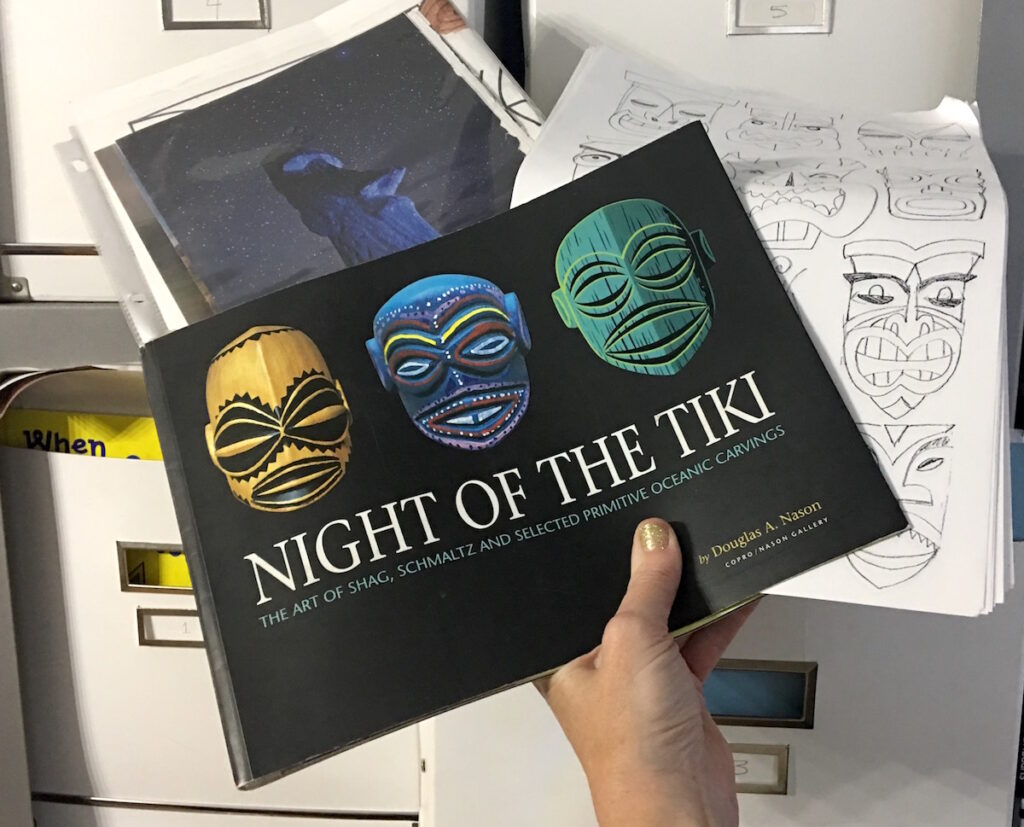
Upon arriving at school, anything students need is moved into the last “B” – bins.
Bins
I have found providing students with bins to access materials works wonders. My “bins” are repurposed book bins separated by grade level. These bins are where I keep all the handouts and any other paper materials my students might need throughout the lesson. Every Monday, I fill each bin with the items each grade level will need. It saves me time because I don’t have to hand out papers and also helps give my students a level of autonomy.
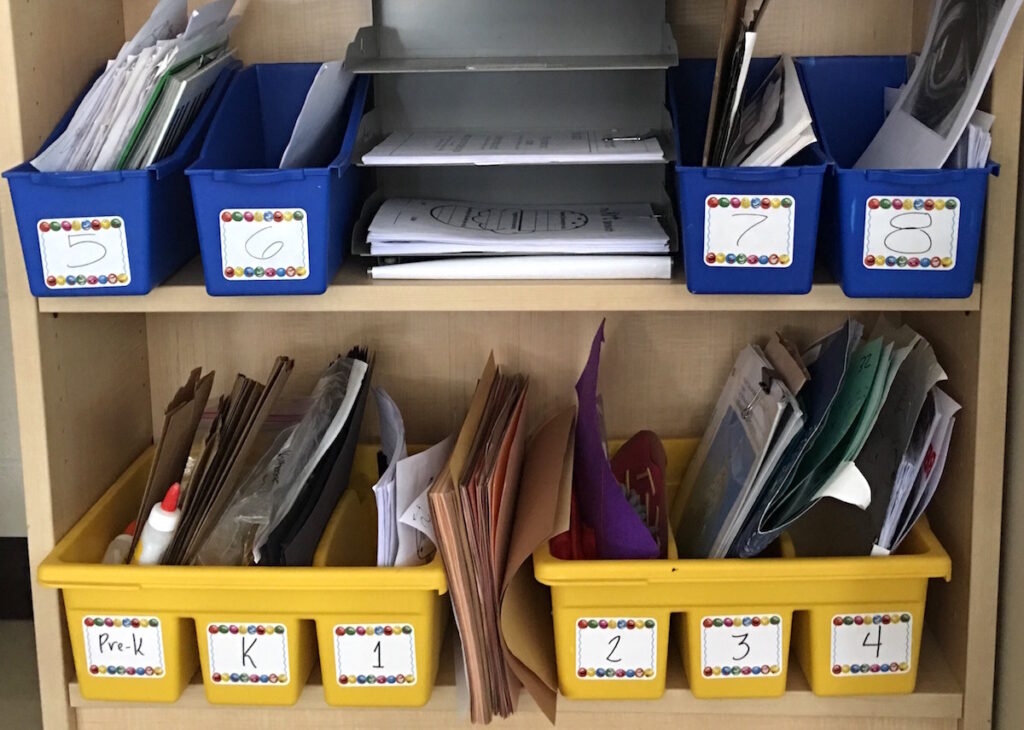
The Benefits of the 3B System
There are numerous benefits to the 3B system.
1. It saves time.
Keeping student materials in bins not only saves time passing out papers but also saves time from taking things out and putting them away all day long. Plus, keeping work tables clear allows for more work space and fewer distractions. The students simply get what they need when they are ready for it. If students know where frequently used supplies live in your art room, they can help themselves and run cleanup.
2. It teaches students to be respectful art room citizens.
This system makes teaching students how to care for things imperative. I prefer my students have this ownership over the materials and learn how to respect and care for their supplies. I consider it a part of their art education.
3. It forces you to edit and refresh.
Of course, good teachers are constantly editing. Getting grade level boxes ready for the next month or the next year forces you to think about what you should tweak, omit, and substitute from year to year. I often devote some time in the summer to refreshing my boxes. Out with the old, in with the new. This is a good time to add sample projects and additional materials you cull throughout the year as well.
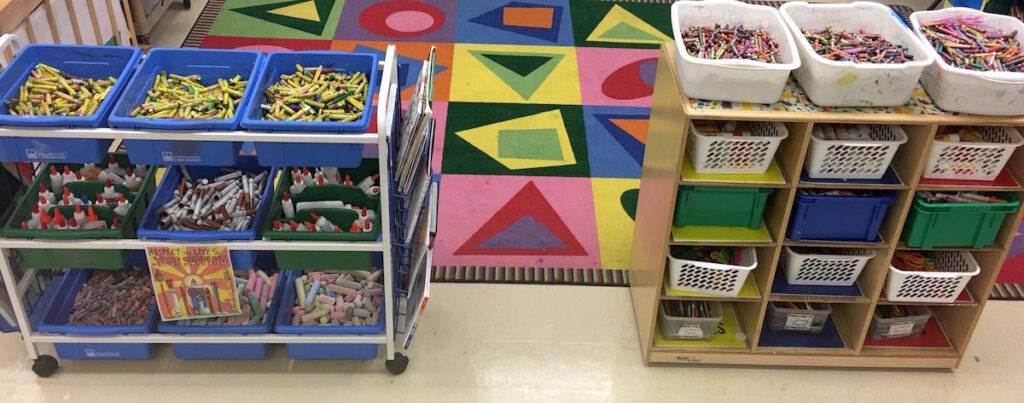
A Great Place to Start
The 3B system provides a strong base upon which to build and continually renovate your curriculum. It allows you to juggle multiple grade levels and lessons each week without losing your mind!
How do you prep for multiple grade levels successfully?
What tips and tricks can you share that you’ve found make a big difference?
Magazine articles and podcasts are opinions of professional education contributors and do not necessarily represent the position of the Art of Education University (AOEU) or its academic offerings. Contributors use terms in the way they are most often talked about in the scope of their educational experiences.





